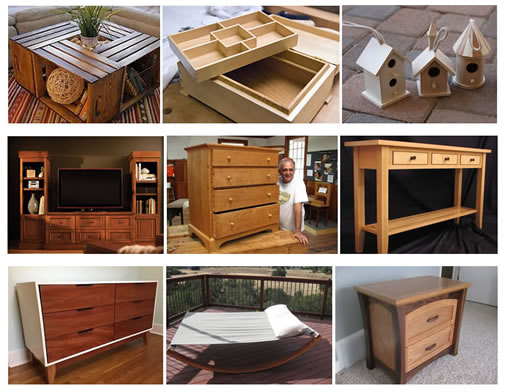A pea gravel flower bed sounds like a good idea – and for good reason, it offers not only aesthetic appeal but also practical benefits and functionality that can elevate the overall ambiance of your outdoor space.
In this article, we delve into the world of pea gravel, exploring its suitability for flower beds, its advantages, potential drawbacks, and whether it can replace traditional mulch.
Can you use pea gravel in flower beds?
Pea gravel isn’t just for pathways and driveways – it can also work wonders in flower beds. Its small, rounded stones create a visually appealing surface while offering practical benefits.
Drainage is one of its primary advantages, ensuring excess water doesn’t pool around plant roots, thereby preventing root rot and promoting healthy growth.
Additionally, pea gravel acts as a barrier against weeds, minimizing the need for constant weeding and maintenance.
Why not use pea gravel?
While pea gravel offers several benefits, it’s essential to consider its drawbacks before incorporating it into your flower beds.
One concern is its heat retention properties, which can lead to overheating of plant roots during hot weather. Pea gravel can act like a heat trap, baking the roots of your delicate plants.
Moreover, unlike organic mulch, pea gravel doesn’t enrich the soil with nutrients. Maintaining plant health in pea gravel can be challenging, as it requires precise watering and fertilization to ensure adequate nutrition reaches the roots. While drainage is great, pea gravel can sometimes hinder water penetration, especially if the layer is too thick.
Remember, not all plants thrive in the rocky landscape. If your heart is set on hydrangeas or ferns, pea gravel might not be your cup of tea. Choose drought-tolerant and heat-resistant varieties for optimal results.
Cost is another factor to consider, as pea gravel can be more expensive than other mulching options. Finally, there’s the risk of displacement, especially in high-traffic areas or during heavy rainfall.
We have written a comprehensive guide on Pea Gravel Patio’s Pros and Cons to help you further understand pea gravel before installation.

Pea Gravel vs. Mulch:
Can you use pea gravel instead of mulch?
So, can pea gravel replace your trusty mulch entirely? Not quite. Pea gravel and mulch serve similar purposes but have distinct characteristics. While both can enhance the aesthetics of flower beds and suppress weed growth, they differ in their properties and maintenance requirements.
Pea gravel offers better drainage and longevity compared to organic mulches, making it a suitable alternative in areas prone to excessive moisture or erosion. However, mulch provides organic matter as it decomposes, enriching the soil and supporting plant growth.
Pea Gravel vs. Mulch for Flower Beds: Comparison Table
| Feature | Pea Gravel | Mulch |
| Weed Suppression | Excellent | Good |
| Drainage | Excellent | Moderate |
| Maintenance | Low (no annual replacement) | Moderate (may need annual replenishment) |
| Nutrients | None | Adds nutrients to the soil |
| Moisture Retention | Poor | Good |
| Heat Retention | High (may overheat roots) | Low |
| Plant Suitability | Drought-tolerant, heat-resistant | Wide range of plants |
| Aesthetics | Modern, clean look (various colors) | Natural, rustic look (various colors) |
| Cost | Moderate | Moderate |
| Biggest Advantage | Low maintenance, excellent drainage | Adds nutrients, good moisture retention |
| Biggest Disadvantage | No nutrients, heat retention | Requires replenishment, not ideal for all plants |
What kind of gravel do you use for a flower bed?
When selecting gravel for your flower beds, consider size, texture, and drainage properties. Pea gravel, with its small, smooth stones, is an excellent option for flower beds due to its aesthetic appeal and functional benefits.
However, other types of gravel, such as crushed stone or river rock, may also be suitable depending on your design preferences and soil conditions. Choose gravel that complements your garden’s aesthetic while providing adequate drainage and support for plant growth.
You may also like:
Beyond the Basics: Choosing the Right Rocks for Your Garden
Pea gravel, with its size ranging from 1/4″ to 3/8″, is the classic choice. But the world of decorative stones is vast! Here are some alternatives:
- Crushed gravel: Larger and better for paths, offering good drainage and stability.
- Decomposed granite: Provides some nutrients while retaining the aesthetic appeal.
- River rock: Smooth and rounded, offering a decorative touch with good drainage.
Conclusion
Pea gravel offers a versatile and visually appealing option for enhancing flower beds, but weighing its pros and cons before incorporating it into your garden is essential. By considering factors such as drainage, maintenance, and aesthetic preferences, you can make an informed decision that ensures your flower beds thrive year-round.

John Brown
John Brown brings a wealth of experience and passion for DIY, Home and Garden, and Woodworking. With a dedication to empowering enthusiasts, he shares insights, tips, and comprehensive guides to help you transform spaces and master woodworking skills.

